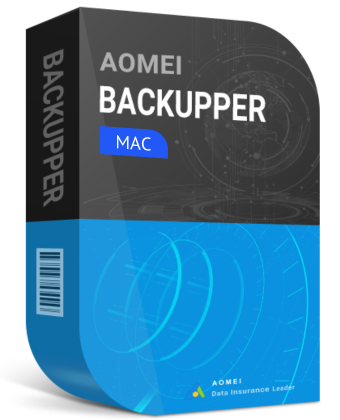This post covers 3 simple and free methods to move files from Mac to external hard drive. And the first solution, relying on professional Mac sync software, allows you to auto transfer files to external drive on Mac easily.

I got a new Mac, and I need to sell my old Mac to get some money back but when I do I’ll lose access to my old files. So I wanna save all the files from my old Mac to an external hard drive so they are accessible later. The question is: how can I move files from Mac to external hard drive? Thanks!!
Sure, you are able to transfer your Mac files to external drive. Macs support various types of external storage devices, including USB drives, external SSDs, and traditional external hard drives. In this guide, we’ll explore three free methods to learn how to transfer Mac files to external hard drive easily and quickly.
Transferring files from your Mac to an external hard drive offers several benefits:
So how to transfer files on Mac to external hard drive? Keep reading, and we will share 3 free ways to accomplish this task. The first one, using a free third-party Mac file sync tool, lets you move files automatically and quickly, and the second and third ones utilize Mac built-in utilities.
To transfer all files from Mac to external hard drive swiftly and securely, the fastest way is to utilize a professional file synchronization software for Mac like AOMEI Backupper Mac. With an intuitive interface, it is easy to navigate and use, even for beginners. And it also comes with various sync features to help you streamline your file sync process.


For how to transfer photos from Mac to flash drive or other external drives using this freeware, you can get it installed on your computer and go on with the guidelines below (PS: It also offers a Standard version for Windows systems and a Server version for Server systems).
Step 1. Connect your USB disk or other external drives to your Mac, and ensure it is recognized and accessible.
Step 2. Open AOMEI Backupper Mac, and click on the New Task button to create a file sync task.
Step 3. Choose a sync method according to your needs:
Step 4. Click Select Sync Source to choose Local Path, and then select the Mac files you wish to move to external drive. Then, click Select Sync Destination > Local Path to specify your connected USB drive as the sync destination.
Step 5. Set up automatic sync if needed. Then, hit Sync to copy files from Mac to external hard drive easily.
If you prefer not to use third-party software, there are two traditional methods for transferring files from your Mac to an external hard drive: using Mac Finder and relying on Terminal commands.
Using Finder is a simple and intuitive way to move files from your Mac to an external hard drive. Here are steps for how to copy files from Mac to USB hard drive:
Step 1. Plug your external hard drive into your Mac's USB port.
Step 2. Click the Finder icon in the Dock to open a Finder window. Then, navigate to the files or folders you want to move.
Step 3. Use Command + C to copy items to the clipboard, open the external drive, and hold down Option + Command + V to paste them.
For users comfortable with the command line, the Terminal also provides a powerful way to transfer files.
Step 1. Connect your external drive, and launch Terminal from the Applications > Utilities folder.
Step 2. Type the cp command followed by the source file path and the destination path. For example:
#1. Why can't I move files from Mac to external hard drive?
There are several reasons why you might be Unable to copy files from Mac to an external hard drive:
#2. Why is my Mac not allowing external hard drive?
If your Mac is not recognizing your external hard drive, try the following troubleshooting steps:
#3. How do I copy my entire Mac to an external hard drive?
To copy your entire Mac to an external hard drive, you can use Time Machine, Apple’s built-in backup feature:
Moving files from your Mac to an external hard drive is an essential task for managing your data and ensuring your files are securely backed up.
Whether you choose to use specialized software like AOMEI Backupper Mac or rely on the Mac Finder or Terminal commands, the task can be done easily. But for continuous file synchronizations, AOMEI Backupper Mac is a better and time-saving option.